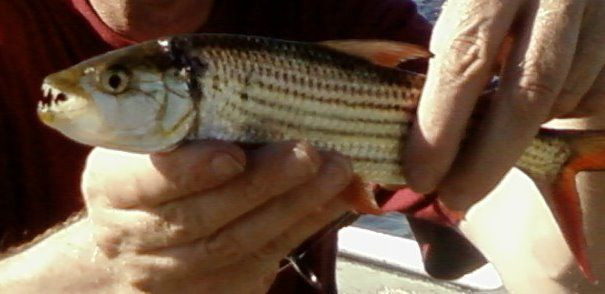Tigerfish Jump To Catch Birds In Flight, First Record Of Predatory Attack Happened ‘So Incredibly Quickly’ [VIDEO]

In Africa, some freshwater fish have taken predation to new heights.
New images captured in a South African lake in the Mapungubwe National Park shows a tigerfish leaping out of the water and catching a swallow midflight. The video is the first record of a freshwater fish preying on birds in flight, according to a new study published in the Journal of Fish Biology.
“The whole action of jumping and catching the swallow in flight happened so incredibly quickly that after we first saw it, it took all of us a while to really fully comprehend what we had just seen,” Nico Smit, director of the Unit for Environmental Sciences and Management at North-West University in Potchefstroom, South Africa, told Nature.com. He adds, “the first reaction was one of pure joy, because we realized that we were spectators to something really incredible and unique.”
While reports in the 1940s described African tigerfish leaping out of the water up to 3 feet high, it was only when Smit and his team set out to study the migration patterns of animals in a lake in the Mapungubwe National Park, near the border with Botswana and Zimbabwe, that they witnessed the phenomenon firsthand.
Researchers say they saw about 20 tigerfish successfully capture barn swallows, known for their speed, every day. The fish leapt into the air from various depths to attack the unsuspecting birds.
Scientists say the new findings show that the tigerfish have an avivorous diet that may occur in other fish populations. “We hope that our findings will really focus the attention on the importance of basic freshwater research, and specifically fish behavior,” Smit said.
This isn’t the first time fish have been caught preying on birds. In December 2012, a separate study showed European catfish hunting pigeons, grabbing them on shore and dragging them into the water. Researchers captured video of the act on the Tarn River in France and believe it is an adaptive behavior, developed after the fish were introduced into the region in 1983.
© Copyright IBTimes 2024. All rights reserved.






















